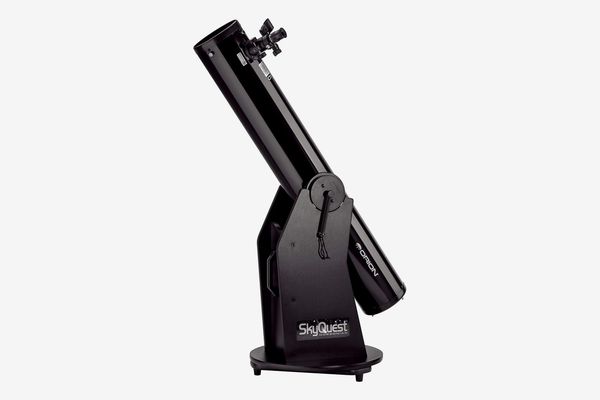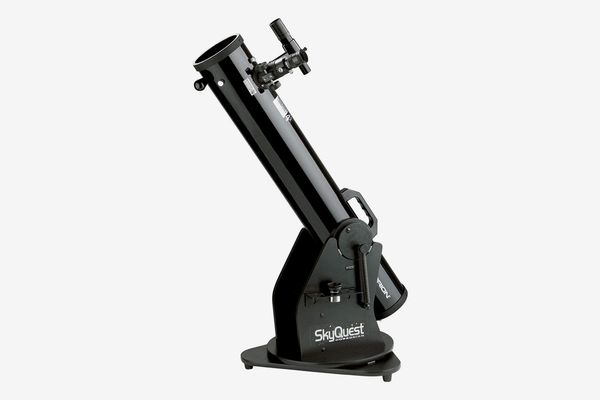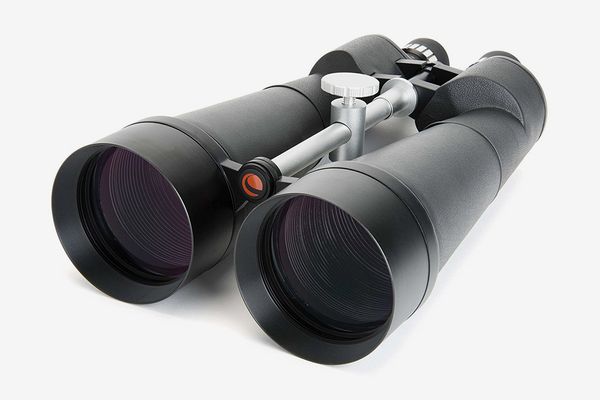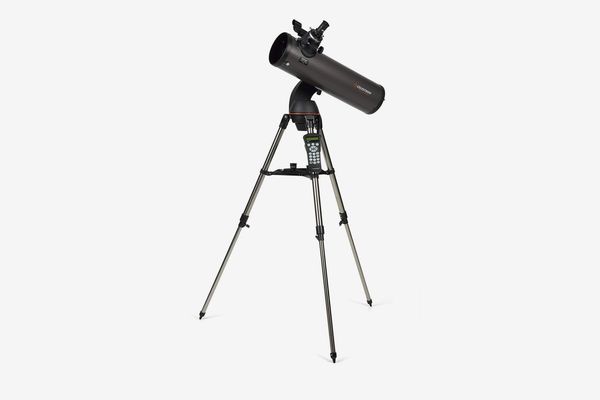
While the sun is usually the star of the summer, this year, the moon has stolen some of its spotlight, thanks to the 50th anniversary of the Apollo 11 landing and the glut of things it has inspired, including movies (First Man), documentaries (Apollo 11), exhibitions (the Metropolitan Museum of Art’s “Apollo’s Muse: The Moon in the Age of Photography”), and interviews with former astronauts (like the Strategist’s with Leland Melvin). Still, as enlightening as these things may be, the best way to get up close and personal with the moon (and anything else in the solar system) is also probably the most obvious — by using a telescope. It’s a bit of an investment, sure, but not as expensive as you may think, and it would certainly make for an unexpected way to entertain (and educate!) guests at your next rooftop party or your kids’ next sleepover.
If buying a telescope sounds like a somewhat intimidating task, fear not: There are affordable entry-level models that will do the trick, according to the six astronomers we spoke with, all of whom say the biggest rule in deciding which telescope to buy is to choose one you’ll actually use. In other words, save the huge ones for the pros and opt for something that’s easy enough to carry to your roof or backyard or toss in your car for your next road trip. “The main thing is that it’s easy to set up and easy to use,” says Irene Pease, president of the Amateur Astronomers Association of New York. “As long as you have something that’s easy to set up, you’ll use it more often.” Read on for Pease and our five other experts’ favorite portable, easy-to-set-up telescopes that’ll have you gazing at galaxies far, far away in no time.
Best telescope for beginners
All of the astronomers we spoke with said that beginners should start with a Dobsonian telescope. Invented by amateur astronomer Jon Lowry Dobson in 1965, Dobsonian telescopes are portable, relatively inexpensive, and don’t require much setup — not even a tripod, because the telescope sits on the ground. They have a Newtonian (named after scientist Sir Isaac Newton) reflector system, meaning that there are two mirrors — one concave and one flat — inside the telescope tube that gather light and produce the image you see in the viewfinder. Mary Odekon, an astrophysicist and professor of physics at Skidmore College, says that “if you get a Dobsonian telescope, you have enough magnification to see the rings of Saturn (looking tiny, not large — but definitely like rings!) and the moons of Jupiter, visible even from a city.” And Rick Bria, vice-president of the Astronomical Society of Greenwich, says, “They are easy to use, very powerful for the price, and can take rough use.” Where our experts diverge, though, is on the size of a Dobsonian telescope that a beginner should get.
Justine Haupt, a developer of astronomy instrumentation at Brookhaven National Laboratory, recommends buying “the biggest Dobsonian telescope you can get for your budget.” The large size refers to the diameter of the mirror used to reflect light inside of the telescope (a larger mirror collects more light, letting you view objects that are dim in the sky). Haupt tells us that although a lot of telescopes advertise magnifying power, what you really want is one with a greater capacity to collect light, allowing you to view dimmer objects in the sky. This is determined by the diameter of the telescope’s aperture (or light-collecting area), which is measured in inches. “It’s not magnification we need, but light-collecting area, and Dobsonian telescopes are like big ol’ buckets for light,” she explains. But the larger the telescope, of course, the heavier and more difficult to carry it will be. That’s why Odekon and Bria both like the Orion Skyquest XT6, which has an aperture that’s six inches in diameter (making it big enough collect plenty of light) but isn’t too heavy to lug outside. At under $300, it’s in the more affordable price range for telescopes but still high-quality, according to Bria. “The materials and design are simple and strong,” he says, noting that the telescope’s center of gravity is low, so that if you accidentally bump into it, it won’t tip over (you will be using it in the dark, after all). “In short, it has a simple design, robust build, and low cost per size,” he adds. “This allows the beginner a bigger entry-level telescope to view everything from the moon to the galaxies.”
Best slightly less-expensive telescope for beginners
For a slightly smaller (and slightly less expensive) option, Odekon also named Orion’s SkyQuest XT4.5 Dobsonian telescope, which has a 4.5-inch aperture. “It’s not too big to carry around and still gives a good view of the moon and planets,” she says. Jeffrey Miller, an astronomer at St. Lawrence University’s physics department, told us that he recently used a telescope like this at a public observation night hosted by the Adirondack Sky Center and Observatory. “While my colleagues were operating the large telescopes inside the observatory, I took a small Dobsonian telescope into the field and showed Jupiter and Saturn to people who were just arriving,” he says.
Best binoculars for beginner astronomers
Many of the astronomers we spoke to say that binoculars can also be a good (and less cumbersome) way to kick-start your stargazing hobby. “I’m often tempted to recommended binoculars first and Dobsonians second,” says Haupt. “The thing is, once most people get the idea in their head that they want a telescope, they want an actual telescope, and the idea of binoculars might, I think, feel anticlimactic. But they’re great, and many amateurs who start with telescopes wind up coming back to binoculars as their primary thing.” She also notes that even a smaller pair of binoculars will allow you to make out the moons of Jupiter, rings of Saturn, the Andromeda Galaxy, and the Orion Nebula — some of the main night-sky attractions for amateur astronomers. While our experts say beginners can really use whatever binoculars they might have at home, we’ve written about these Celestron SkyMaster Astro Binoculars before, with Strategist contributor Steven John saying they “let me see details on the surface of the moon I thought were reserved for Apollo astronauts.” For less labor-intensive viewing, Haupt recommends setting up your binoculars with a parallelogram mount, like this one from trusted astronomy brand Orion, “so you can lounge in a beach chair while using them.”
Best computerized telescope for beginners
Rick Fienberg, press officer of the American Astronomical Society and former editor-in-chief of Sky and Telescope magazine, also recommended binoculars for beginner astronomers. But if you want something a bit more high-tech, he suggests a computerized style of telescope called a GoTo. “In the ’90s, a new technology emerged which is now extremely sophisticated in the era of the internet, Bluetooth, and cellphones — it’s what we call a GoTo telescope,” he explains. “This telescope is mounted on a mount, can track the sky with electronic motors, and has a computer built into it that knows where everything in the universe is located.” To find whatever it is you want to look at in the sky, you simply enter coordinates from a sky map via the control pad, and the telescope will focus on the item at that coordinate point. This GoTo telescope is made by Celestron, one of the three major brands in telescopes that Haupt mentioned to us. GoTo telescopes can be a bit more costly than Dobsonians, but this Celestron is in a lower price range, which is why we think it’s a good beginner option.
The Strategist is designed to surface the most useful, expert recommendations for things to buy across the vast e-commerce landscape. Some of our latest conquests include the best acne treatments, rolling luggage, pillows for side sleepers, natural anxiety remedies, and bath towels. We update links when possible, but note that deals can expire and all prices are subject to change.









